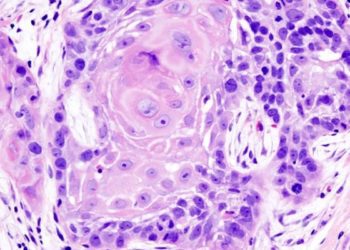Low-intensity smoking associated with increased mortality
1. In this prospective cohort study, individuals who consistently smoked fewer than 1 or 1 to 10 cigarettes per day had increased risk of all-cause and cause-specific mortality (lung cancer and cardiovascular disease) as compared to never smokers.
2. This study also found that amongst former smokers, the earlier one quit smoking, the lower the risk of all-cause and cause-specific mortality. This shows that smoking cessation should be encouraged even at low levels of smoking.
Evidence Rating Level: 2 (Good)
Study Rundown: The effect of heavy smoking with numerous diseases and higher mortality is well established. However, the impact of low intensity smoking is less understood. This prospective cohort study evaluated the association of long-term smoking of fewer than 1 or 1 to 10 cigarettes per day (CPD) with adverse outcomes compared to individuals who never smoked cigarettes.
This study showed an increased risk of all-cause and cause-specific mortality in low intensity smokers of less than 1 and 1 to 10 CPD relative to never smokers. This association was similar in women and men, and was observed across a range of smoking-related causes of death, the highest of which was lung cancer. Additionally, the younger the age of cessation among former smokers, the lower the risk. Strengths of this study included the size of the cohort and good representation of the US population. Limitation of the study included reliance on self-reported data on the amount of smoking (which is often under-reported).
Click to read the study, published today JAMA Internal Medicine
Relevant Reading: Nondaily and social smoking: an increasingly prevalent pattern
In-Depth [prospective cohort study]: This study was conducted using data from the National Institutes of Health- AARP Diet and Health Study cohort, which was created using questionnaire data in 1995 to 1996. Information was gathered on demographics, anthropometrics, lifestyle, diet, family history of cancer and medical history from people aged 50-71 living in 6 US states (California, Florida, Pennsylvania, New Jersey, North Carolina and Louisiana) or 2 metropolitan cities (Atlanta, Georgia and Detroit, Michigan). A follow-up survey was sent in 2004-2005. Cigarette use across 9 different age periods was determined from the 2004-2005 survey. Reported number of cigarettes per day (CPD) was collapsed into 6 categories (0, <1, 1-10, 11-20, 21-30 and >30 CPD). Outcomes of interest included all-cause mortality as determined by linkage with the National Death Index (NDI), and cause-specific mortality, which used ICD-9, and ICD-10 coding to determine cause of death in the NDI. Causes looked at were: all cancers, lung cancer, cardiovascular disease (heart disease, hypertension, cerebrovascular disease, atherosclerosis, aortic dissection), and respiratory disease (pneumonia, influenza, COPD). Cox proportional hazards were used for statistical analysis.
Of the 290 215 cohort participants, 7.7% were current smokers, 53.9% were former smokers and 38.4% were never smokers. The mean (SD) follow-up was 6.6 (1.3) years, 37 331 participants died. There was a dose-dependent association between number of CPD at baseline and all-cause mortality. Relative to never smokers, lifelong consistent smokers of <1 CPD or 1 to 10 CPD were at increased risk of all-cause mortality: HR 1.64 (95%CI 1.07-2.51) and HR 1.87 (95%CI 1.64-2.13), respectively. Positive associations were observed for all examined smoking-related diseases with low-intensity CPD. The association with lung cancer was HR 11.61 (95%CI 8.25-16.35) and the association with respiratory disease was HR 6.00 (95%CI 4.05-8.89).
Image: PD
©2016 2 Minute Medicine, Inc. All rights reserved. No works may be reproduced without expressed written consent from 2 Minute Medicine, Inc. Inquire about licensing here. No article should be construed as medical advice and is not intended as such by the authors or by 2 Minute Medicine, Inc.





